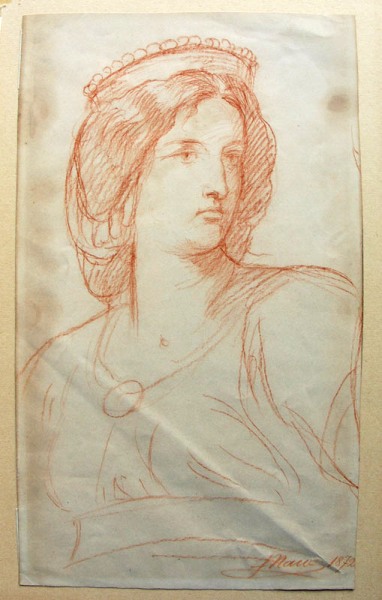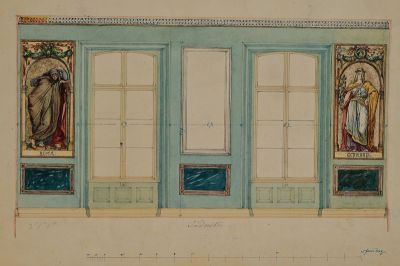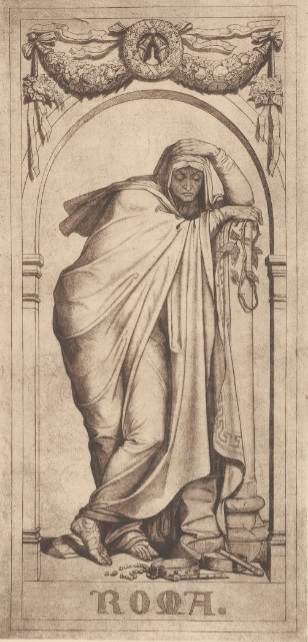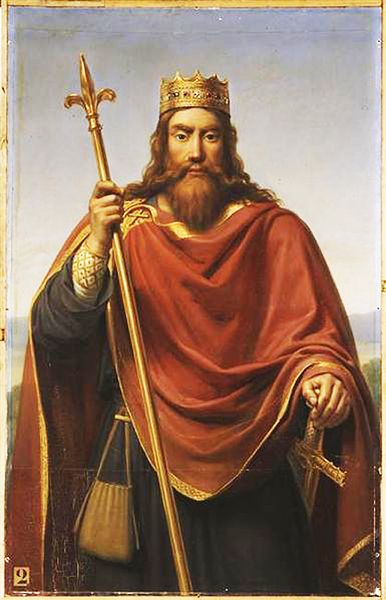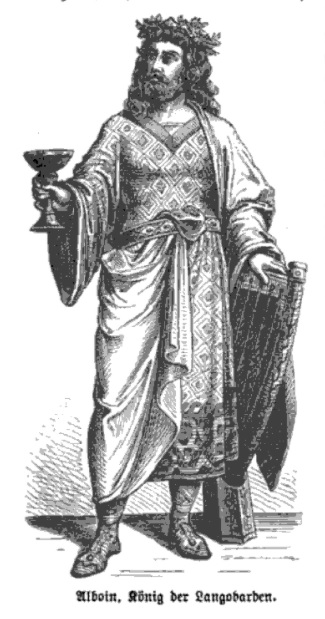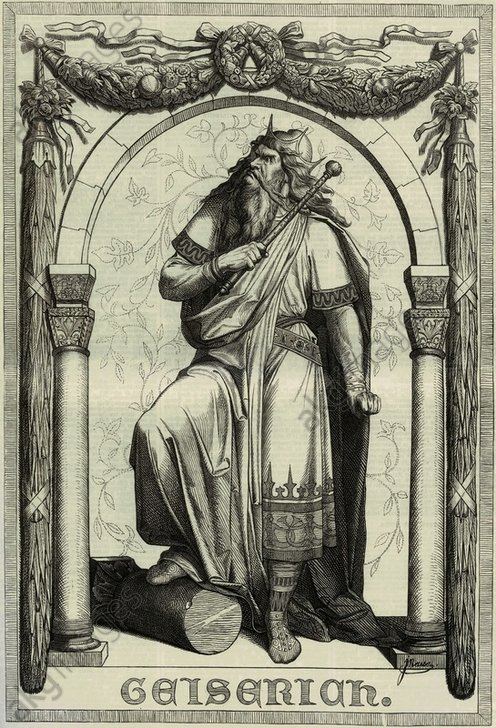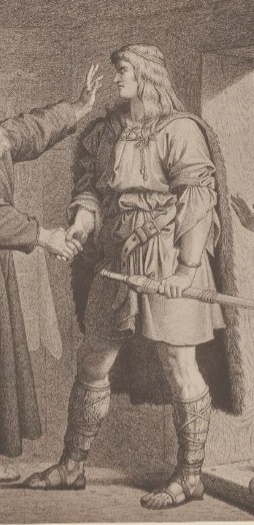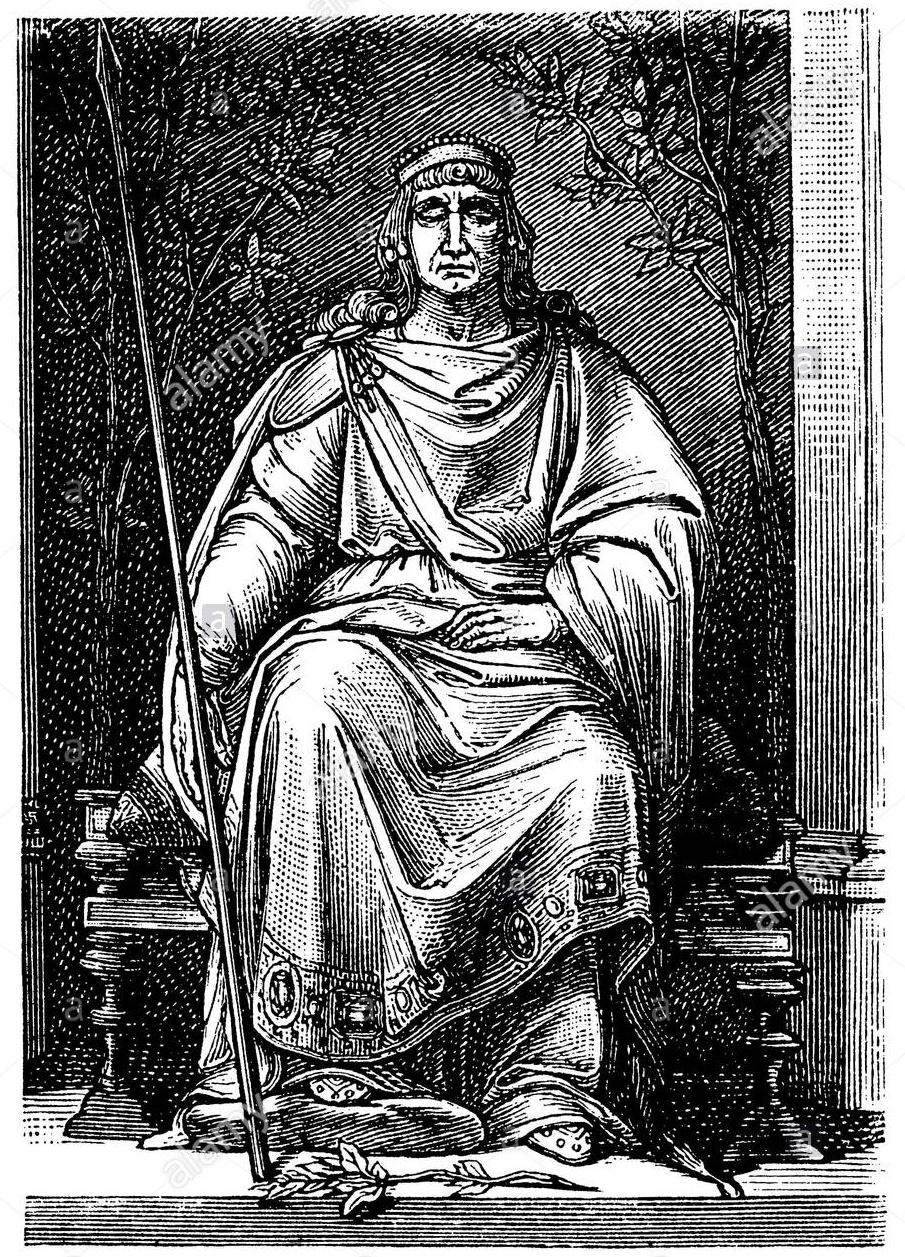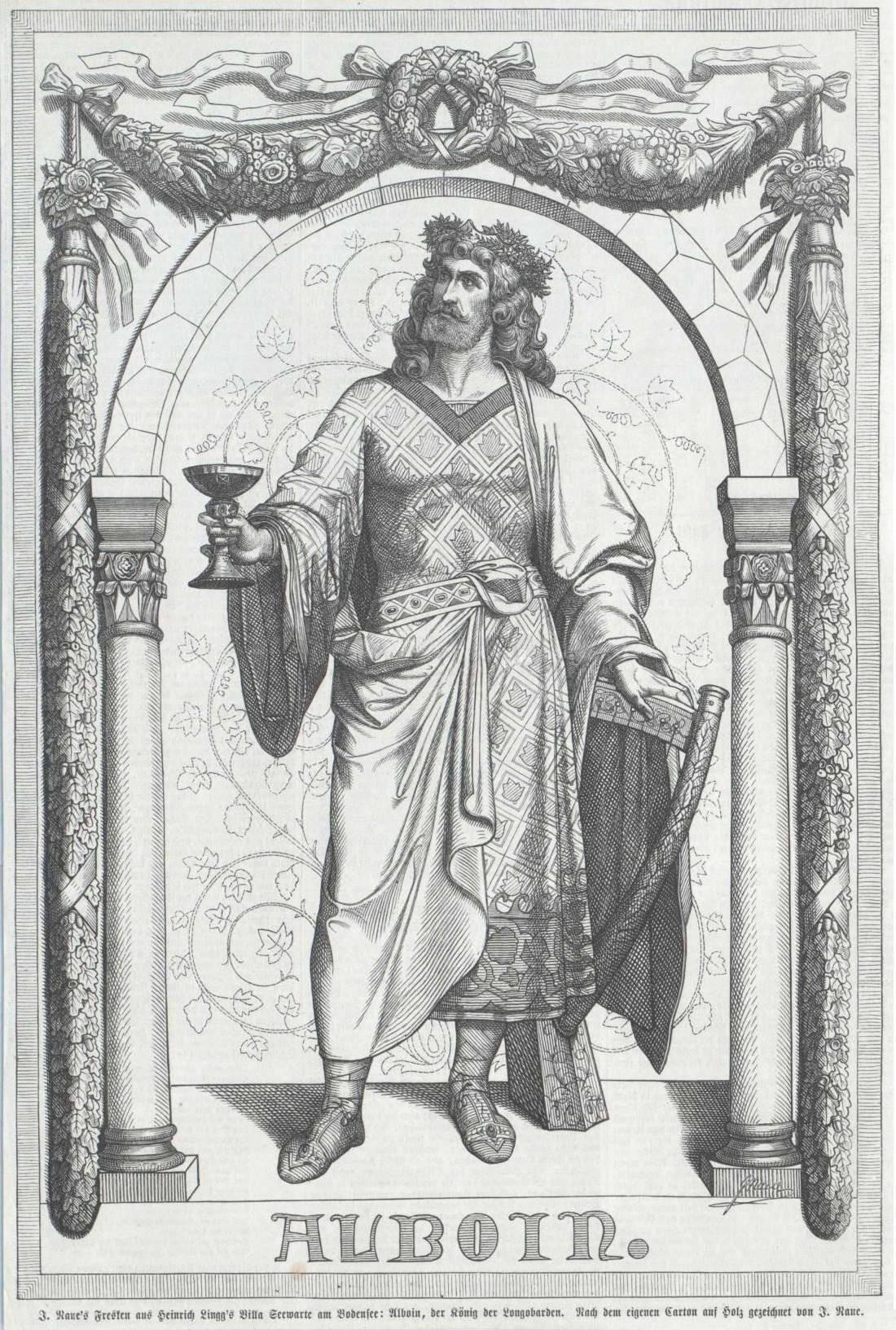Dr. Julius Naue (1835-1907)
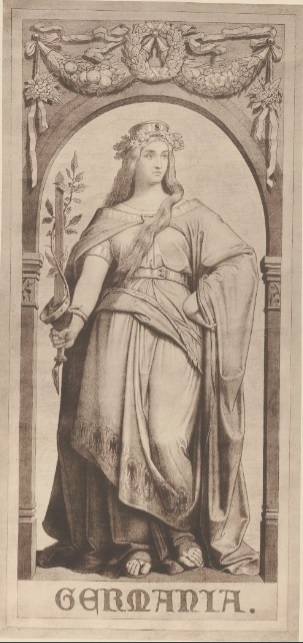 |
Germanischen
Heldenkönige der Völkerwanderung Germanic Hero-Kings of the Great Migration Villa Lingg, Lindau im Bodensee 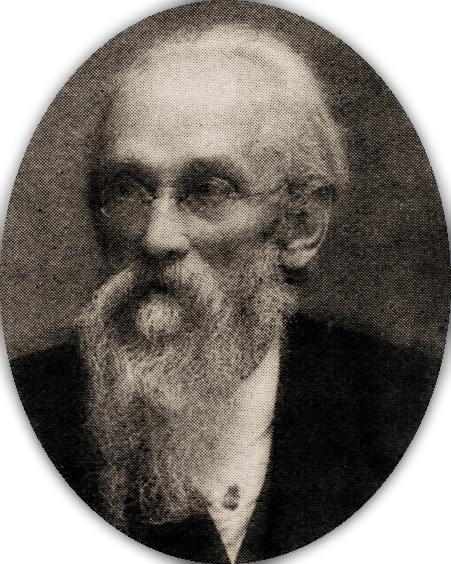 and Die Geschichte der Völkerwanderung The Story of the Great Migration A Picture Cycle by Julius Naue |
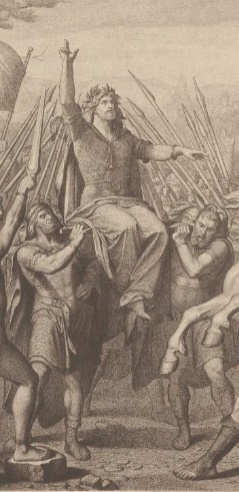 |
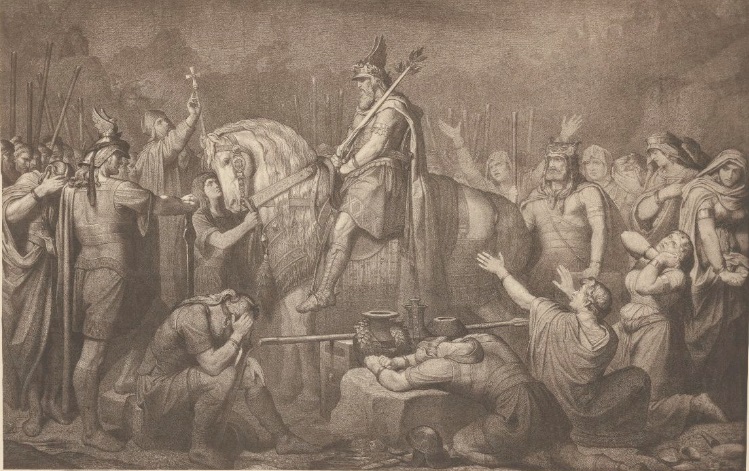
See Also: Julius Naue, Lost Masterpieces
[HOME][POPULAR RETELLINGS]
In 1868, the wealthy merchant Heinrich Lingg, the brother of the
German poet Hermann Lingg [pictured], had returned from America
and bought a plot of land in a beautiful bay on Lake Constance
near Lindau and built a villa on it. When the building was
finished, he privately commissioned the German painter
Julius Naue to adorn the
principle chamber of Villa Lingg with eight monumental frescoes,
each seven feet in height, illustrative of Lingg's popular poem,
Die Völkerwanderung (The Migration of Peoples).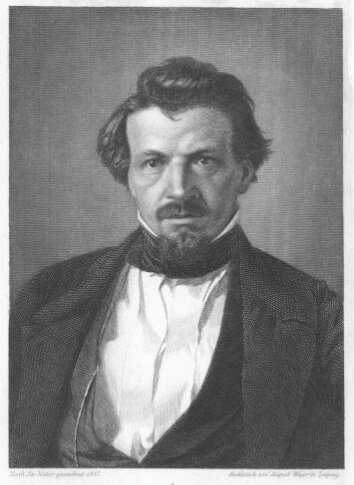 A trip to the old Italian city of Ravenna was planned for the
studies necessary for the paintings in the company of Hermann
and Heinrich Lingg. The city is particularly strange and
alluring for Germans. Here the Cheruscan Arminius son was
brought as a prisoner, kings of the Goths and Longobards ruled
here, and in Verona the heroic songs of the Migration Period
were heard at court. The stories of Alboin and Dietrich von Bern
reside there, because Bern was Verona. According to Hermann
Lingg's diary, they had a very comfortable stay, visiting old
Byzantine churches with their portraits of people, the districts
named after the Goth king, his tomb and the remains of his
palace. On the way home, they visited Florence, where they
admired the galleries, then returned to Germany without further
stay. Afterward, Naue remained in Lindau to apply the studies
made in Italy to his frescoes in Villa Ling.
A trip to the old Italian city of Ravenna was planned for the
studies necessary for the paintings in the company of Hermann
and Heinrich Lingg. The city is particularly strange and
alluring for Germans. Here the Cheruscan Arminius son was
brought as a prisoner, kings of the Goths and Longobards ruled
here, and in Verona the heroic songs of the Migration Period
were heard at court. The stories of Alboin and Dietrich von Bern
reside there, because Bern was Verona. According to Hermann
Lingg's diary, they had a very comfortable stay, visiting old
Byzantine churches with their portraits of people, the districts
named after the Goth king, his tomb and the remains of his
palace. On the way home, they visited Florence, where they
admired the galleries, then returned to Germany without further
stay. Afterward, Naue remained in Lindau to apply the studies
made in Italy to his frescoes in Villa Ling.
That same year, painter Julius Naue exhibited eight cartoons at an art expo in Munich which were to be painted al fresco in the villa of the merchant Lingg in Lindau. The subject is composed of the most outstanding heroes from the Great Migration. The walls to the hall entrance will be decorated with figures representing Rome (Roma), Germania, and six great Germanic Hero-kings of the Migration period [Die 6 grössten germanischen Heldenkönige der Völkerwanderung], including Alaric at Rome, Odoacer surrendering Ravenna to Theodoric, the Frank Chlodwig, the Lombard Alboin, Geiserich the King of the Vandals, and other chief personages and events of that era. These figures with their characteristic emblems stand in round arches around which festoons wind, and show good characterization, Chlodwig and Albion are especially well executed. Ferdinand Gregorovius, a vistor to the home in late September of 1868 remarked, "Visited the villa of Lingg, a merchant and brother of the poet of Völkerwanderungen. He has some of the barbarian kings of the poem painted in fresco in his room beside the Germania and Roma of which he seems not a little proud." Today Villa Lingg, at Schachener Straße 103, Lindau im Bodensee, is described as the former summer residence of the physician Heinrich Lingg, a late classicist cross-gable building after the mid-19th century, with flat gable roofs projecting on the lakeside, Belvedere structure with tower of stairs; interior frescoes by Julius Naue around 1870; associated greenhouse and octagonal bathing house on the harbor. So all or some of the frescos are still there. (Source: Über Land und Meer: allgemeine illustrirte Zeitung 1868). |
|||||||||||||||||||||||
Of the frescoes on a gold background in a hall of the "Villa Seewarte" (aka Villa Lingg) of the Munich merchant Heinrich Lingg near Lindau on Lake Constance. Dr. Konrad Ritter von Zdekauer in his Kriegs- und Friedensfahrten, Band 1, (1881) observes: "Here, at the place where the poet Hermann Lingg wrote his mighty epic, 'Der Völkerwanderung' his brother, the art-loving merchant Heinrich Lingg, erected a memorial to this most important of the recent national heroic poems, otherwise only donated through princely patronage. Lingg let Julius Naue, a pupil of Schwind, paint frescos of the most prominent figures of the migration as their subject in the hall of his country house. When you enter through the vestibule, you can see the youthful Germania and the aged Roma which has been overcome, on the walls on both sides of the window. On the opposite side, these figures are aptly pronounced, the painter has based their characterization wholly on the poetry presented with great understanding." The main hall contains a row of eight 7 foot high frescos with two great doors as their connecting links , painted gray on gray, with the scenes the "Storming of Rome by Alarich" and the "Surrender of Ravenna from Odoaker to Theodorich".
Architectural Drawing for Villa
Lingg (1868)
The Mourning Roma (Left) and the
Triumphant Germania (Right)
The four motifs: Roma, Germania, Odoacer, and Theodoric, each titled and dated 4 June 1867. |
|||||||||||||||||||||||
|
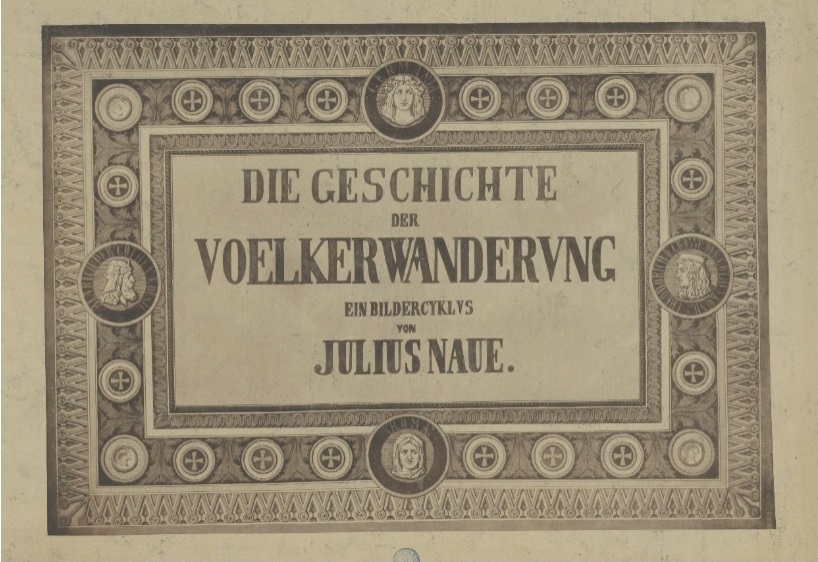 Title Page 1. The Mourning Rome (see above) 2. The Triumphant Germania (see above) 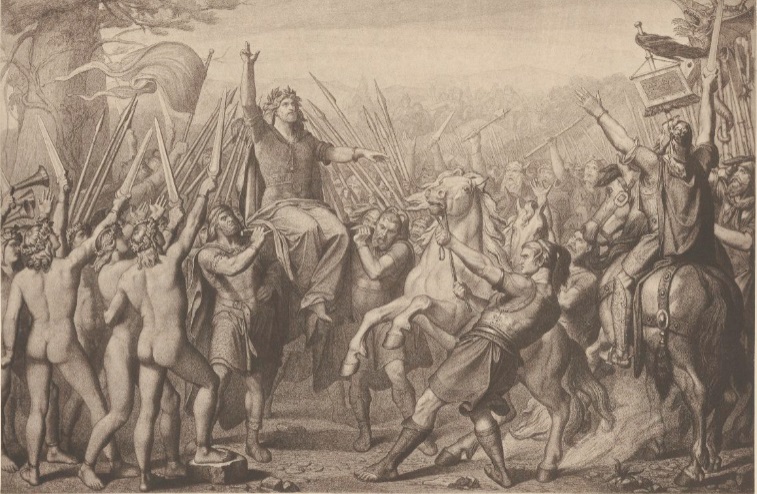 3. Alaric is proclaimed King of the Visigoths in Greece, 398  4. Alaric is buried in Busento and mourned by his people, 410 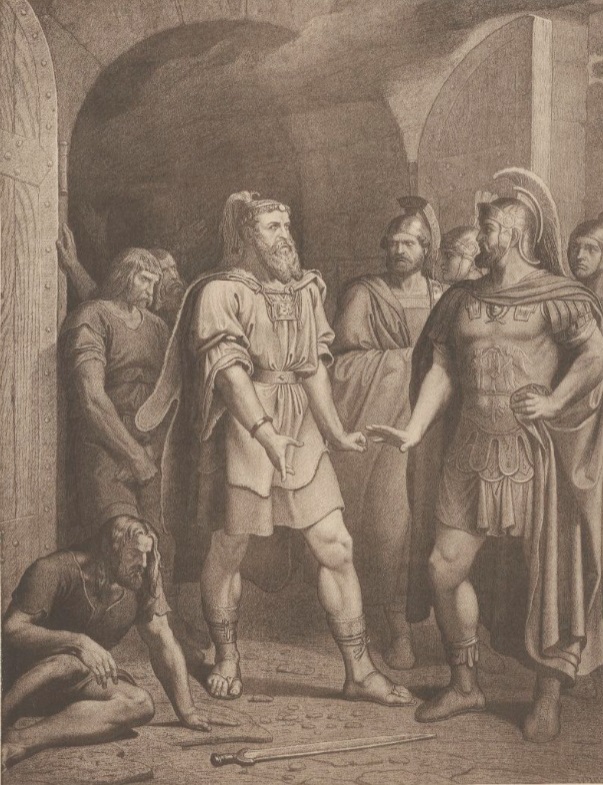 5. Radegast, Duke of the Vandals, is captured, 407 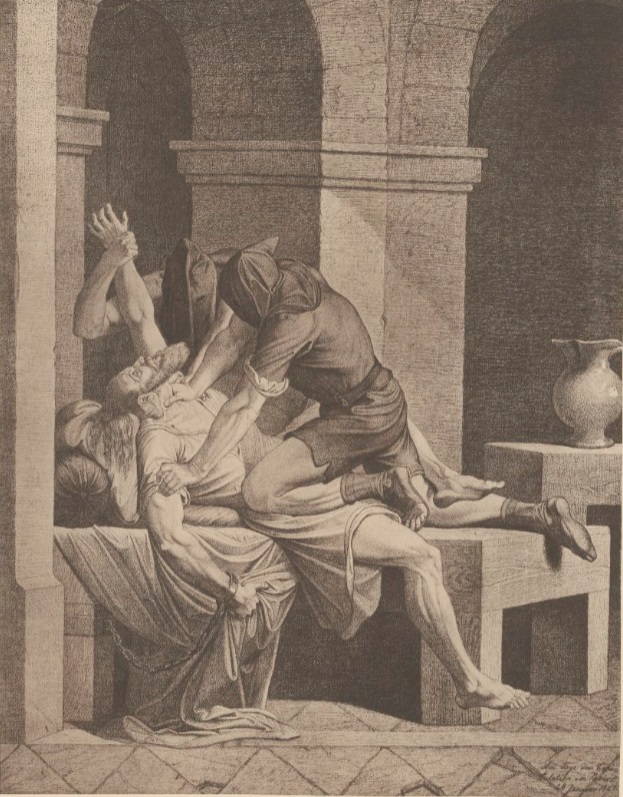 6. Radegast is imprisoned in Ravenna on the orders of Emperor Honorius, 407 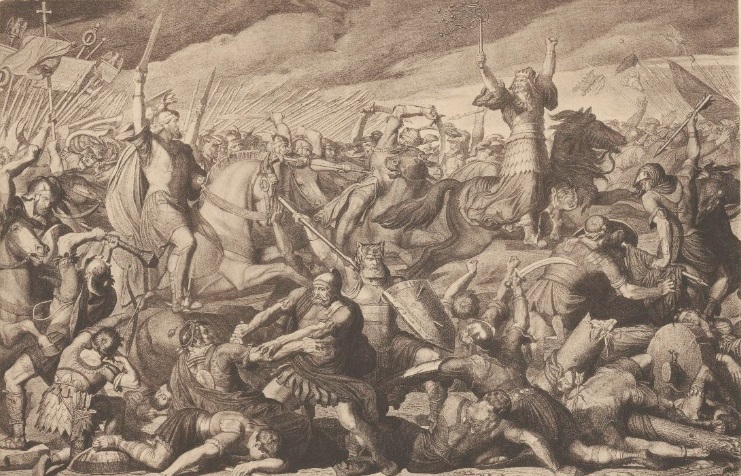 7. The Battle of the Catalan Fields, 451 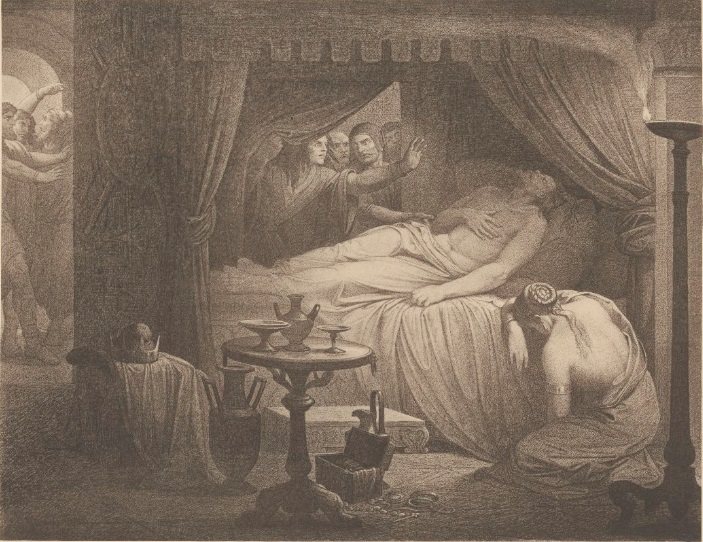 8. Attila, the King of the Huns, is found choked in blood on the morning of his wedding, 453 Holzschnitt Illustr. Zeitung, 1875. 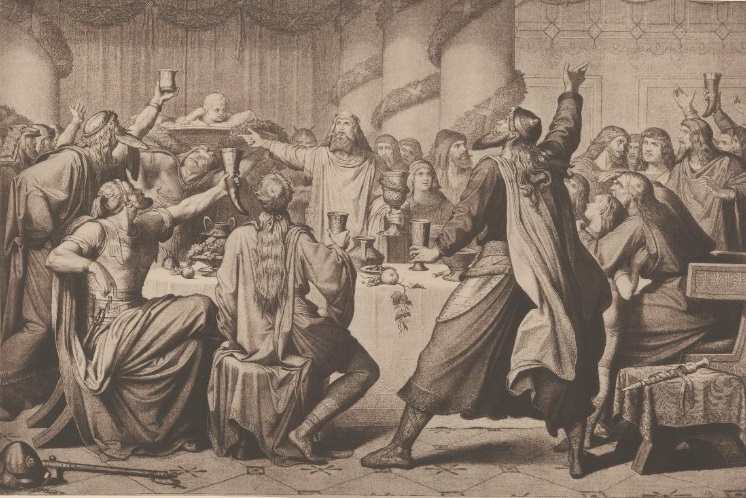 9. The Germanic princes celebrate the liberation from Attila's yoke at Theudomir in Pannonia and greet little Theodoric as King, 455 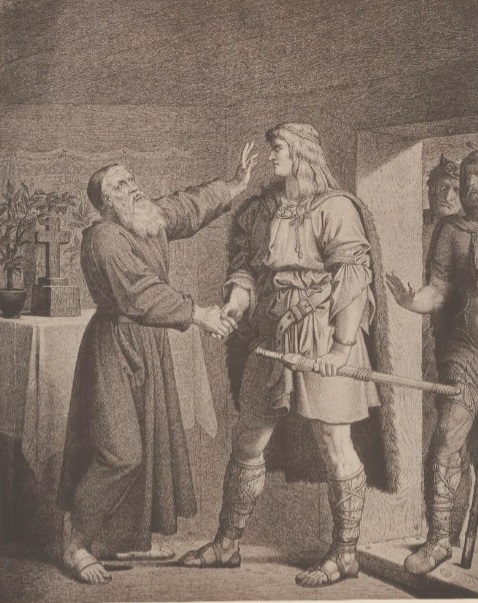 10. Odoacer at St. Severin, 476 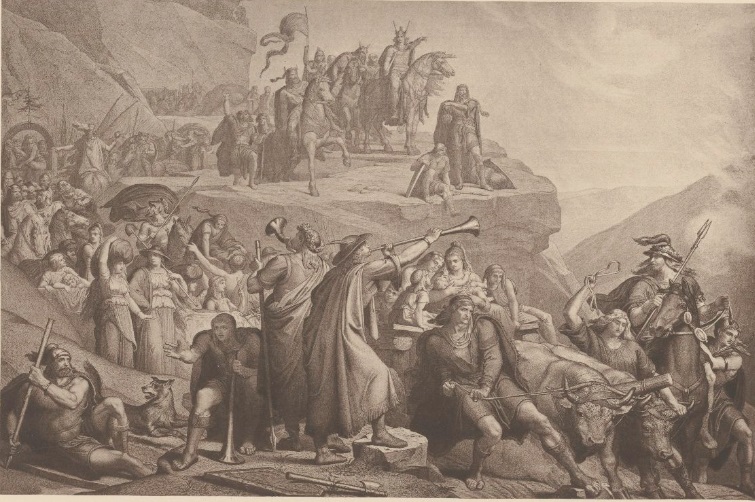 11. Theodoric the Great and the Ostrogoths Entry into Italy, 488 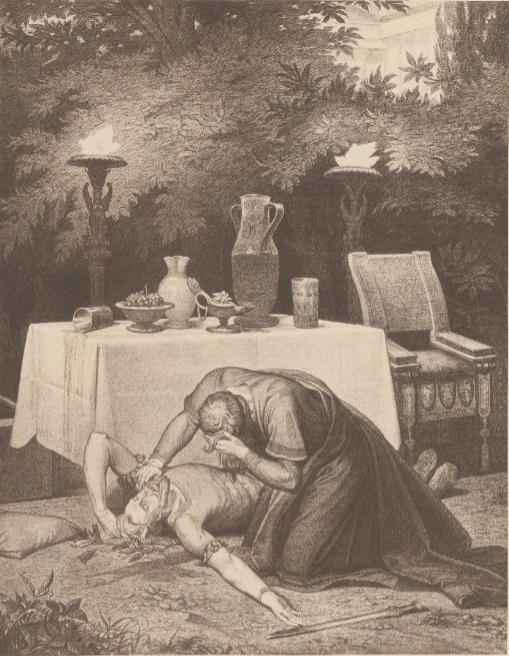 12. Theodoric by the body of Odoacer, who was murdered in anger by him, 493  13. Vitigis his sisters and aunties are brought before the deathly ill Empress Theodora as prisoners by Belisarius in Delphi, 537 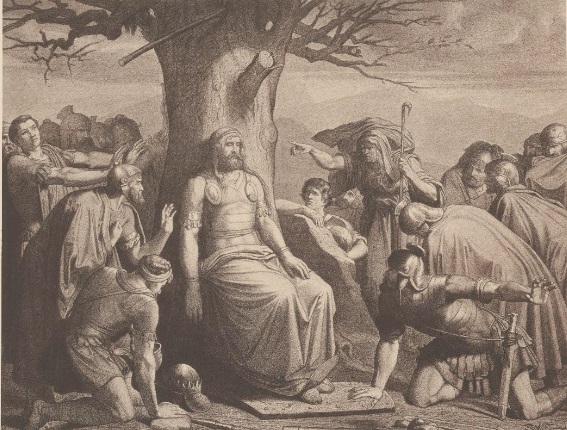 14. An old sorceress shows Roman warriors the Gothic king Totilas, who fell in battle, 552 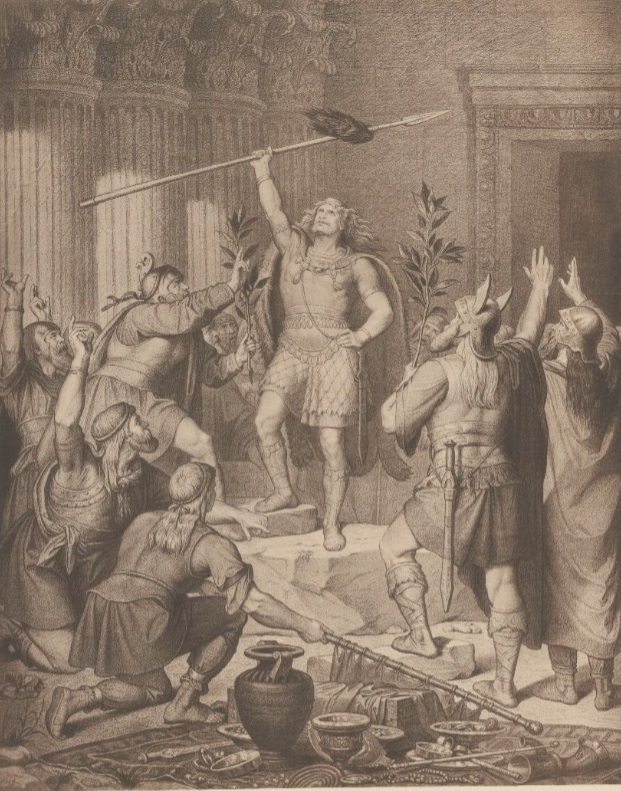 15. Tejas is proclaimed king of the Ostrogoths in Italy, 552 |
|||||||||||||||||||||||
|
See Also Julius Naue, Lost Masterpieces |
|||||||||||||||||||||||
